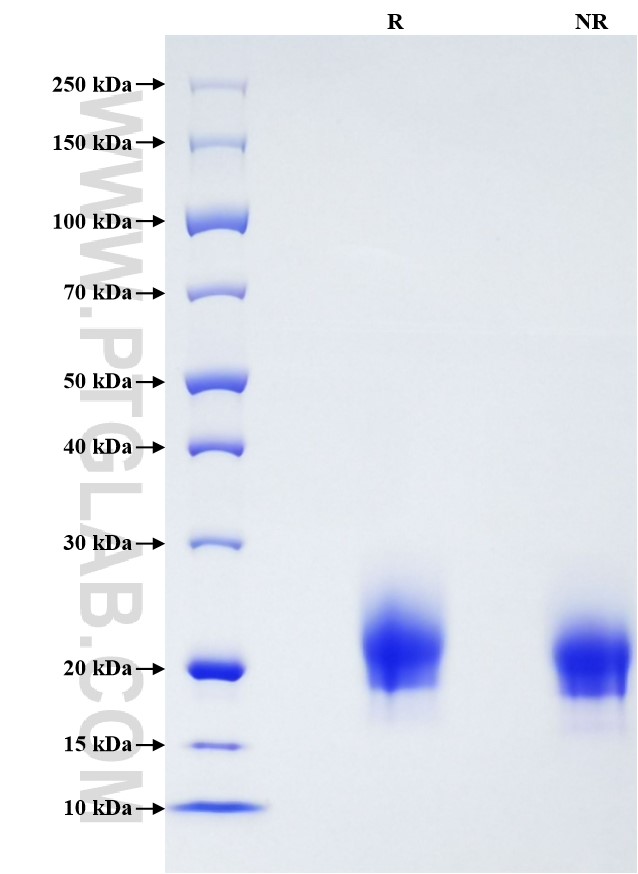Recombinant Human GM-CSF protein (His Tag)
种属
Human
纯度
>90 %, SDS-PAGE
标签
His Tag
生物活性
未测试
验证数据展示
产品信息
| 纯度 | >90 %, SDS-PAGE |
| 内毒素 | <0.1 EU/μg protein, LAL method |
| 生物活性 |
Not tested |
| 来源 | HEK293-derived Human GM-CSF protein Ala18-Glu144 (Accession# P04141) with a His tag at the N-terminus. |
| 基因ID | 1437 |
| 蛋白编号 | P04141 |
| 预测分子量 | 15.3 kDa |
| SDS-PAGE | 18-25 kDa, reducing (R) conditions |
| 组分 | Lyophilized from 0.22 μm filtered solution in PBS, pH 7.4. Normally 5% trehalose and 5% mannitol are added as protectants before lyophilization. |
| 复溶 | Briefly centrifuge the tube before opening. Reconstitute at 0.1-0.5 mg/mL in sterile water. |
| 储存条件 |
It is recommended that the protein be aliquoted for optimal storage. Avoid repeated freeze-thaw cycles.
|
| 运输条件 | The product is shipped at ambient temperature. Upon receipt, store it immediately at the recommended temperature. |
背景信息
CSF2, also named as GM-CSF, is an important hematopoietic growth factor and immune modulator, which is produced by a variety of cell types including T cells, macrophages, endothelial cells and fibroblasts upon receiving immune stimuli. It was originally recognized as a stimulator for the proliferation of granulocytes and macrophages from bone marrow precursor cells. It has also been shown to promote the survival and activation of mature myeloid cells and therefore contributes to the maintenance of innate immune homeostasis. Recent studies suggest that GM-CSF also has proinflammatory functions and plays critical roles in the development of autoimmune and inflammatory diseases, particularly in Th17 driven diseases. GM-CSF also plays a role in embryonic development by functioning as an embryokine produced by reproductive tract.
参考文献:
1. Burgess AW. et al. (1977). J Biol Chem.252: 1998-2003. 2. Shi Y. et al. (2006). Cell Res. 16: 126-33. 3. Hamilton JA. et al. (2013)Trends Immunol. 3: 81-9. 4. Codarri L. et al. (2011) Nat Immunol.12: 560-7. 5. Hamilton JA. et al. (2013)Trends Immunol. 23: 403-8. 6. Hansen PJ. et al. (2014) Anim Reprod Sci. 149: 59-6.


